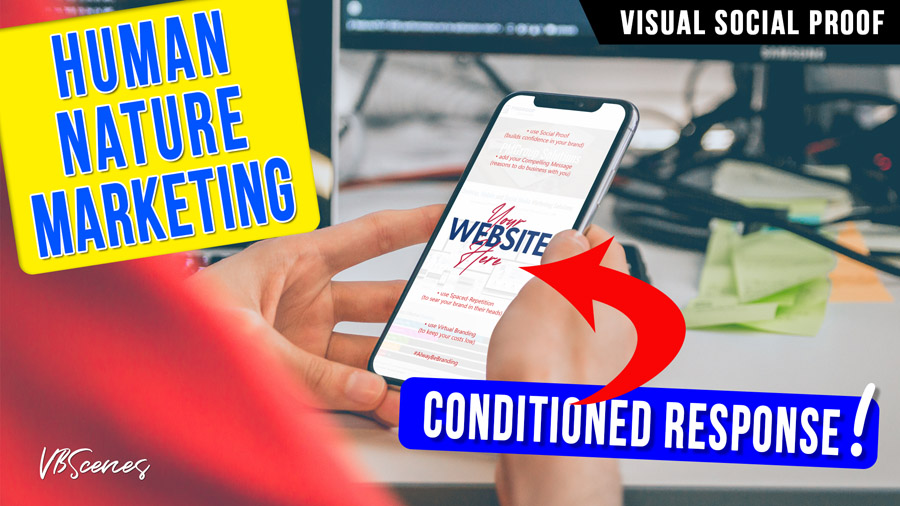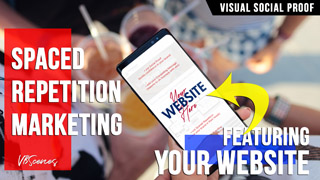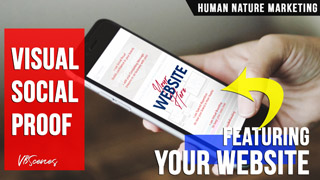Human nature marketing refers to marketing strategies and tactics that leverage basic human nature psychological tendencies to motivate desired behaviors. This approach is based on scientific principles from psychology and neuroscience about how the human mind works. The goal is to tap into consumer motivations, decision-making, memory, emotions, and habits to influence brand perception and drive conversions.
In this article, we will explore key elements of human nature marketing including social proof, spaced repetition, virtual branding with social proof images, and always be branding principles. Understanding and ethically applying insights about innate human nature can greatly enhance marketing results.
What is Human Nature Marketing?
Human nature marketing utilizes knowledge of ingrained human tendencies to inform marketing tactics. Rather than persuading consumers outright to take certain actions, it aims to guide their existing motivations and habits. This makes messages and brand impressions feel more intuitive rather than forced.
Some key human nature behavioral traits leveraged in this marketing approach include:
- Herd mentality and looking to others for social cues
- Seeking patterns and cognitive ease
- Emotional decision making
- Habit formation through repetition
- Associative memory networks
Strategically tapping into these ingrained patterns allows brands to become integrated with consumer lifestyles organically. Done ethically and appropriately, human nature marketing simply works with existing consumer motivations rather than attempting to manipulate against their will.
Ethical Considerations
While human nature psychology certainly offers advanced persuasion opportunities, ethical considerations around consent, autonomy, and transparency are paramount. Manipulative or deceitful tactics that override informed consumer consent violate ethical principles.
Instead, this marketing approach aims to celebrate and reinforce existing motivations rather than dictate rigid beliefs. Allowing diverse user autonomy and interpretation makes experiences more meaningful while avoiding issues with consent. As scientific knowledge expands, maintaining principled ethics around human nature dignity becomes even more important.
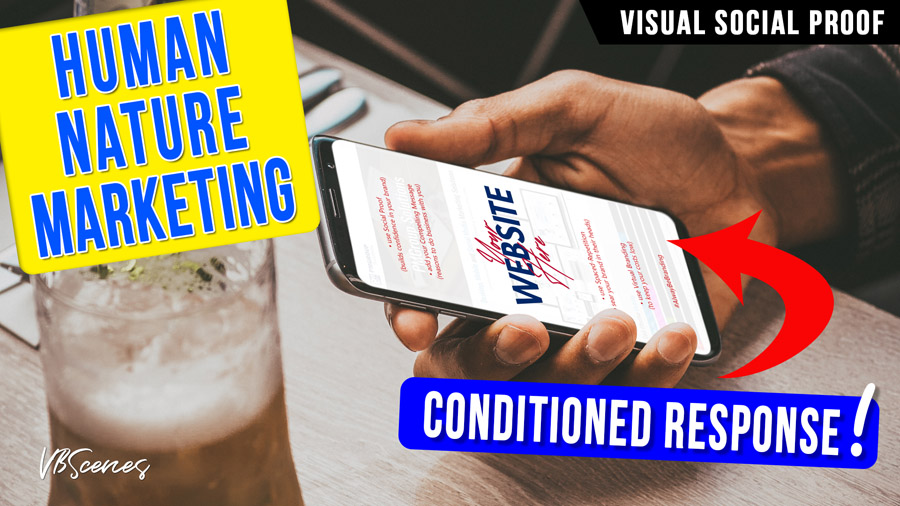
Leveraging Social Proof Images
One major aspect of human nature marketing is leveraging social proof by showing others engaging positively with your brand. Images depicting happy customers or popular products utilize the herd mentality instinct with powerful effects.
The Power of Social Proof and Human Nature Marketing
Human nature beings have an innate herd mentality and tendency to follow the lead of the crowd. When we are unsure about something, we look to what other people are doing to guide our own behavior and decisions. Known as social proof, this psychological principle is extremely influential.
Seeing other people use a product, recommend a brand, or generally engage positively creates an intuitive sense of trust and validation. It gives our brains the social signal that the brand is credible and there is safety in going along with the group.
Strategically displaying social proof therefore taps directly into this herd mentality instinct with persuasive impact. It guides consumer behavior beneficially without needing direct persuasion against their will.
Crafting Strong Virtual Social Proof Images for Human Nature Marketing
Advances in technology have enabled new forms of social proof branding, such as virtually branded images. These are graphics depicting fictional people interacting positively with the brand in social settings.
For example, a liquor company could have virtual branding with social proof images showing attractive groups laughing together while holding their product. These scenes leverage both social proof and aspirational branding, guiding consumer motivations on multiple levels.
When crafting virtual social proof images or scenes, authenticity is key above all else. Imagery should represent real-world situations that customers can relate to, with diverse people and natural reactions. Attempting to manufacture an idealized or inauthentic scene often backfires due to the innate human nature ability to detect false social cues.
Truthful emotional branding helps consumers visualize themselves fluidly within aspirational narratives, rather than aggressively promoting against their will. Allowing multi-faceted interpretations makes experiences more collaborative.
Enhancing Memorability With Reinforcement
While powerful alone, virtual social proof images see greatly enhanced impact when integrated with other ongoing brand messaging. Consistent reinforcement across various consumer touchpoints maximizes memorability through spaced repetition. It also helps convert isolated impressions into deeply intuitive brand familiarity through associative learning.
Spaced Repetition Marketing For Long-Term Brand Recall
In addition to social proof, human nature marketing often uses the power of spaced repetition. Carefully timed messaging that repeatedly exposes consumers to a brand taps into innate human learning patterns for long-term memory formation and habit building.
Spaced Learning Enhances Memory
It is well established in cognitive psychology that spaced learning over time strengthens memory, especially when paired with visuals. This is because the temporal spacing forces deeper mental elaboration compared to repetitive massed learning.
Known as the spacing effect, harnessing this tendency allows brands to evolve from short-term awareness into being fundamentally memorable over a lifetime. Useful memories also become increasingly automatic through repetition, building the brand deeply into intuitive habits.
Spaced Repetition Marketing & Human Nature Touchpoints
Applying spaced learning principles, marketers can strategically time branded content releases for optimal memorability. Virtual social proof graphics and other creative assets depict relatable situations customers see themselves experiencing emotionally. Subtly embedding consistent brand exposure into those imagined narratives generates powerful episodic memory circuits over time.
For example, an international hotel chain could have annual holiday campaigns with different joyful family reunion images, all featuring their resorts prominently in the background. Consumers envision themselves within those holiday narratives, with the brand organically anchoring the overall memory. Over years this evolves into deeply intuitive recall.
Optimizing Timed Releases
When it comes to spaced learning, precise timing intervals matter greatly. Research suggests brand exposures should repeat frequently enough to reinforce memory circuits but remain properly spaced apart for maximal mental consolidation.
Natural seasonal events, holidays, and milestone moments within target demographics all have associated emotional and behavioral patterns. Timed content releases can subtlely integrate brands within these existing intuitive spaces. Consumers already attach meaning to those special times, deepening contextual brand integration.
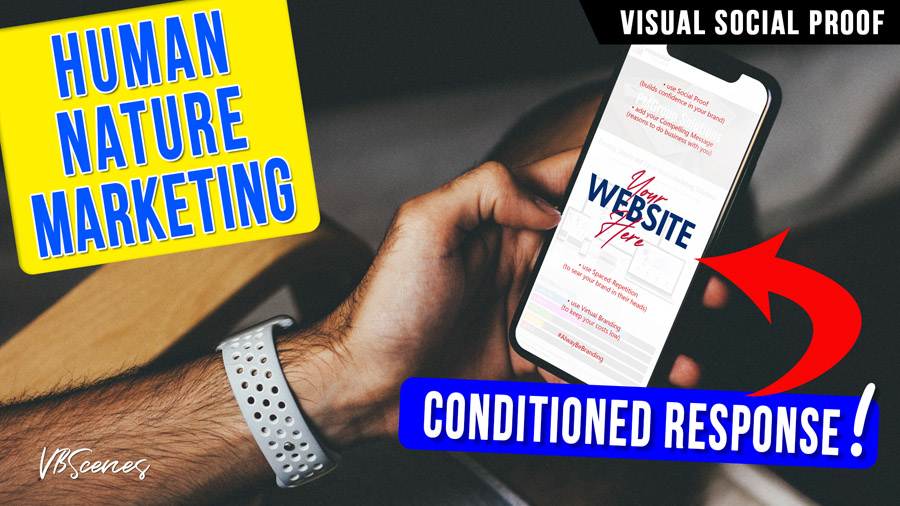
Always Be Branding With Ongoing Consumer Touchpoints
Human nature marketing requires constant subtly reinforced brand exposure rather than limited isolated campaigns. This ongoing presence harnesses habits and memory to build top-of-mind consumer awareness.
Habit-Driven Brand Loyalty
Human decisions and human nature behaviors are largely driven by ingrained habitual patterns rather than purely rational comparative choices. When brands embed themselves in those habitual environments through repeated non-intrusive exposure, loyalty forms intuitively over time.
This is why maintaining an ambient brand presence aligning with consumer rhythms proves so powerful. Expected visibility makes branding feel familiar, comfortable, and subconsciously reinforcing through validation.
Guideposts Within Visual Social Proof Environments
Understanding average consumer journeys allows identifying key environments and touchpoints where branding can maintain an ongoing subtle presence. Common examples include daily commutes, places people frequently travel through, and recurring events.
Posters, signs, branded items, and other environmental integrations make brands symbolically blend into those spaces. Distinctive visual assets like logos, fonts, and colors add recognizable visual glue.
Human Nature Marketing Messaging Using Visual Social Proof
Short, punchy brand messaging can intersect lightly with environmental visibility for positive impact. Sustained explicit pitches risk becoming burdensome so integrated touchpoints should convey meaning quickly.
For example, a cleaning supply company could put up grocery store posters saying “Choosing Us Means Caring For Your Family”. This brief empathetic message subtly builds brand values during mundane shopping.
Personalized Placement With Visual Social Proof
Identifying touchpoints uniquely suited to target demographics allows more personalized branding. Our memories operate based on individual lifestyle patterns, so customized environmental integration has privileged influence compared to generic mass advertising.
A music company catering to teenagers could provide branded supplies to popular youth event venues, seamlessly blending into social activities shaping young consumer identities over time as intuitive preference.
Additional Human Nature Marketing Opportunities
While social proof, spaced repetition, and environmental integration represent foundational elements, human nature psychology grants a variety of supplemental branding opportunities. As scientific knowledge grows, marketers can leverage new behavioral insights ethically.
The Journey of Transformation
Brands centered around facilitating human nature transformation have rich messaging territory. People intuitively connect to narratives of progress across relationships, professional growth, fitness, knowledge, and more.
Strategically timed content reinforcing how brands help consumers on their journey towards better versions of themselves builds an emotional foundation for loyalty. For example, an online course provider’s testimonial advertisements from satisfied customers could emphasize how their classes enabled personal development.
Appreciation of Visual Social Proof and Craftsmanship
Higher-priced luxury items often focus branding on meticulous design details and craft mastery. Conveying a sense of artistry, personalized care, and cultural heritage helps justify costs as wise meaningful investments rather than mere materialism.
For example, a premium watchmaker may elegantly showcase their complex unique mechanical movements alongside a multi-generational family business legacy. This frames ownership as an exquisite generations-spanning family heirloom.
Belonging to Something Bigger
Feeling connected to things larger than oneself is a fundamental human nature motivation that brands can nurture as well. Companies such as outdoor retailers position around sustaining nature while technology firms emphasize empowering world-changing innovation.
Strategically integrating these deeper values within overall messaging helps align brands with satisfying this profound need for purposeful belonging. Consumers view purchasing decisions as ways to emotionally contribute rather than just commercial transactions.
Human nature marketing is a strategy that uses the opinions and actions of others to influence potential customers. It is based on the psychological phenomenon of social proof, which states that people tend to follow the behavior of the majority or the experts in a given situation.
Key Resources for Understanding Human Nature Marketing
Below are some of the top websites that provide in-depth knowledge and real-world examples on the concept and application of human nature marketing in marketing and user experience design.
Human nature marketing is a term that refers to the use of psychological principles and insights to influence consumer behavior and preferences. It is based on the idea that humans have innate needs, desires, and motivations that can be leveraged by marketers to create effective campaigns and strategies.
There are many sites and articles that discuss human nature marketing and its applications, but some of the highest authority ones are:
- Home – Human Nature Marketing: This is the website of a digital marketing agency that specializes in green, clean, and sustainable companies. They claim to use human nature marketing to generate revenue and demand for their clients, who are shaping a cleaner, greener future.
- How to overcome human nature to improve your marketing performance: This is an article from Farm Progress, a leading source of agricultural news and information. It offers some tips and advice on how to avoid common pitfalls and biases that can affect marketing decisions and outcomes.
- Use These 3 Rules of Human Nature To Sell More With Your Marketing: This is an article from Marketing for Success, a website that provides marketing coaching and consulting services. It outlines three rules of human nature that can help marketers increase their sales and profits.
- Humans’ relationship to nature – framing sustainable marketing: This is an academic paper published in the Journal of Services Marketing. It explores the relationship between humans and nature, and how it can inform sustainable marketing practices and policies.
Other Factors Related To Human Nature Marketing
Human nature marketing encompasses a wide range of strategies that leverage our innate psychological tendencies. Beyond the core concepts already discussed, several other factors play a crucial role in making this approach effective. In this section, we delve into additional aspects that can significantly enhance your human nature marketing strategies.
Social Proof Images
Social proof images are powerful tools in human nature marketing, utilizing the psychological phenomenon where people emulate the actions of others in an attempt to reflect correct behavior in a given situation. By showcasing images of real people who have benefited from a product or service, businesses can effectively convey trustworthiness and quality, encouraging potential customers to make similar choices.
Social Proof Marketing
Social proof marketing goes beyond just images; it involves using various forms of social proof, like testimonials, reviews, endorsements, and social media influence, to persuade potential customers. This method capitalizes on the human tendency to be influenced by the actions and approvals of others, especially in uncertain situations, making it a key tactic in human nature marketing.
Spaced Repetition Marketing
Spaced repetition marketing is a technique that leverages the cognitive learning principle of spaced repetition. It involves exposing potential customers to marketing messages at spaced intervals, enhancing memory and recall. This approach is particularly effective for long-term brand retention and loyalty, as it taps into the natural way our brains process and retain information.
Visual Social Proof
Visual social proof combines the power of social proof with compelling visuals. It involves the use of images, videos, and other visual media to showcase the popularity and approval of a product or service by others. This form of social proof is highly effective as it not only tells but shows potential customers the value and reliability of what is being offered, leveraging the human propensity for visual information processing.
Conclusion
Marketing focused on positive ethical engagement with human nature marketing instead of persuasion against people’s will represents a powerful opportunity. Sciences like psychology continue revealing insights into the complexity behind human behavior which marketers can apply beneficially.
However, foundational principles around social proof, spaced repetition, and environmental visibility seem universally relevant as consumer motivations arise from ancient evolutionary patterns. Brands that compassionately align their solutions with satisfying core human needs intrinsically build loyalty over time through consumers’ own self-determined organic identity.

